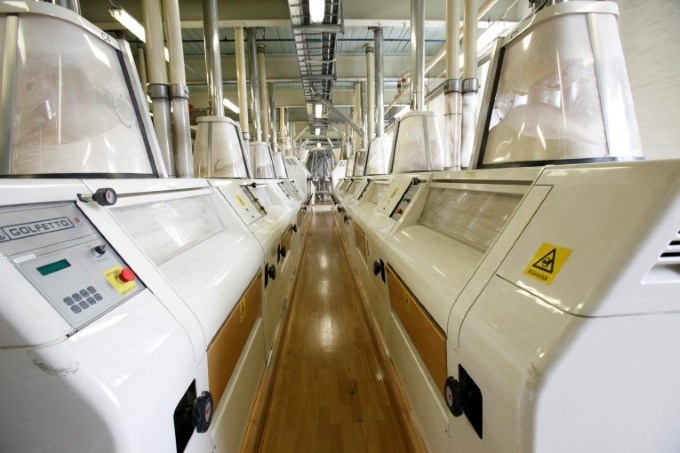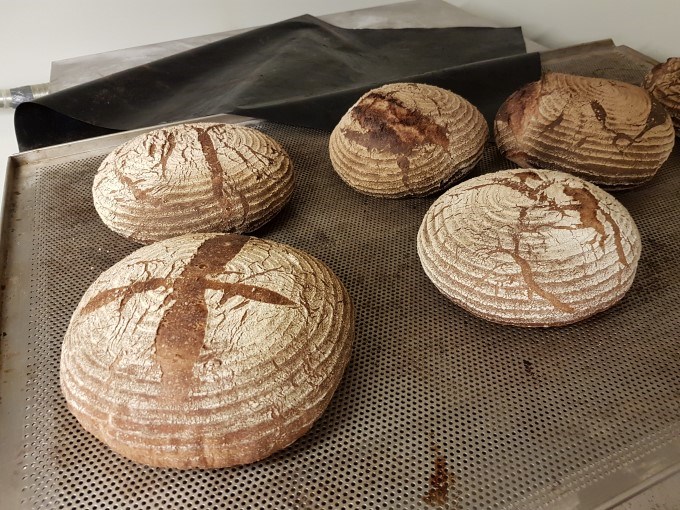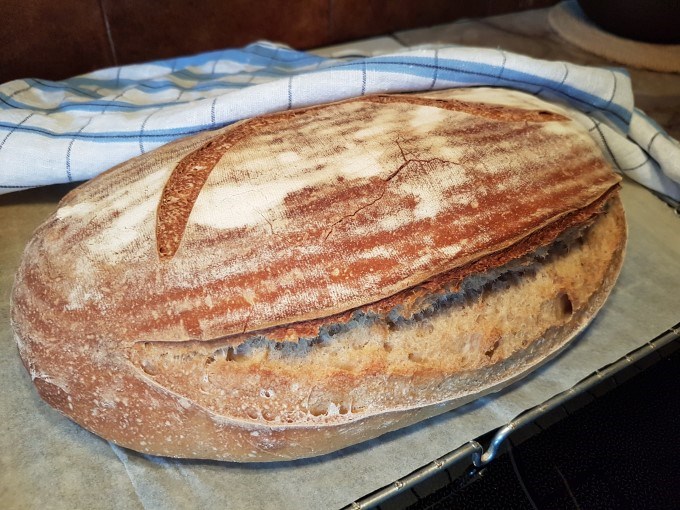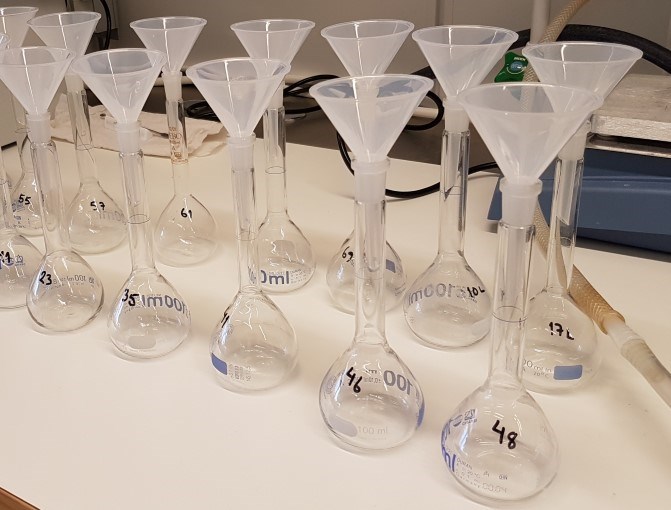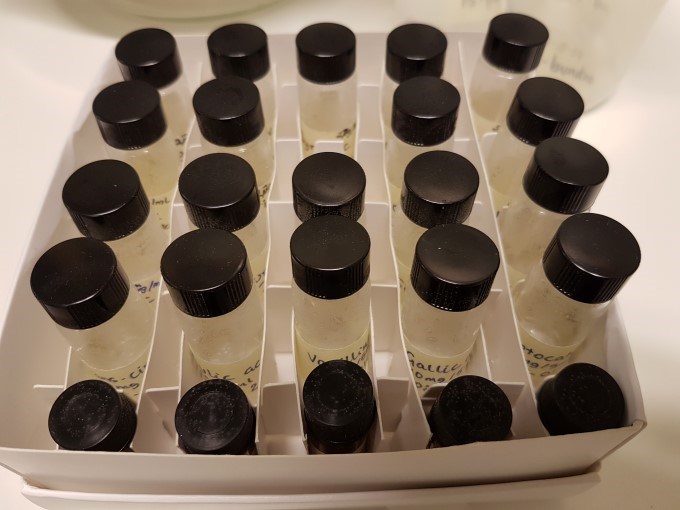Plant foods, for the challenges of the future
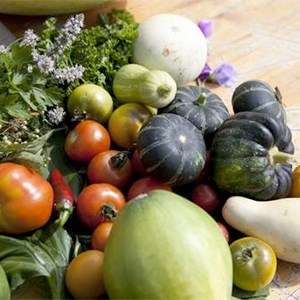
We perform applied and fundamental research concerning different aspects of plant food production, processing and consumption. This is done through collaborations with industry and other research groups.
Dietary fibre in relation to food design, processing, and consumption
To achieve in-depth understanding of the nutritional properties and physico-chemical behavior of fibre during industrial processing we determine componential composition of dietary fibre in plant food materials. We investigate structural features of β-glucan and arabinoxylan, which are two of the major components of dietary fibre. In collaboration with plant breeders we implement targeted changes of dietary fibre profile in cereals, improving their nutritional and functional properties.
Starch characteristics for food and bio-based materials
Starch is an inexpensive raw material and is therefore widely used for food and non-food applications. It constitutes a large part of the energy in the human and animal diet. It is also a perfect bio-based material in many industrial applications such as papers, plastics, detergents etc. In order to optimize starch for multiple applications, we characterize its molecular structure and nutritional value as well as physico-chemical properties.
Applications of product quality know-how in plant breeding
Modern plant breeding has access to a multitude of tools that makes it realistic to improve aspects of crop quality that has not been prioritized in traditional breeding programs. Collaborations between plant breeders and product quality experts has thus become very important. We work together with the Department of Plant Breeding and the Department of Plant Biology at SLU to e.g. explore the composition and use of a novel oil crop, a potato with slowly digested carbohydrates and cereal grain with modified dietary fibre.
Group members

Professor
Roger Andersson https://www.slu.se/cv/roger-andersson/
Researcher
Santanu Basu https://www.slu.se/en/ew-cv/santanu-basu/
Research Engineer
Annica Andersson https://www.slu.se/cv/annica-andersson/
Laboratory Assistant
Janicka Nilsson
PhD Students
Laura Pirkola https://www.slu.se/en/cv/laura-pirkola/
Louise Selga https://www.slu.se/en/cv/louise-selga/
Shishanthi Jayarathna https://www.slu.se/en/ew-cv/shishanthi-jayarathna-/
Sunera Zulficar Nurmomade
Xue Zhao https://www.slu.se/en/cv/xue-zhao/
Former group leader
Professor Per Åman
Current research projects
Dietary fibre, gut-brain-axis and health behaviour (Laura Pirkola's PhD project)
Diet affects our brain via gut microbiota and gut-brain-axis, the complex communication system between the gut and the brain. Rye and oats are cereals rich in dietary fibre and polyphenols, components known to affect gut microbiota. Under this project, the effects of fibre-rich bread on gut microbiota and further on gut-brain axis are studied. In addition, health communication and behaviour over these topics are investigated. The project includes an in vitro fermentation study, a clinical trial and a communication intervention study. The project supports the innovation of healthy, personalised food solutions and communication over the health benefits of grain products. This is one of the governmentally funded LivsID industrial doctoral projects and is conducted in collaboration with Fazer.
Contact information: Laura Pirkola https://www.slu.se/en/cv/laura-pirkola/
Wheat flour composition and its impact on baking properties (Louise Selga's PhD project)
Wheat flour and baking is a widely studied field, and yet the implications of wheat flour composition is not fully understood. The baking properties of wheat flour are dependent of multiple factors, many of which have been studied individually. To get further, a more holistic approach is most likely needed. In this project, multiple biochemical and rheological flour parameters are studied using multivariate analysis to find out how they contribute to the baking properties. This knowledge is highly requested from the milling and baking industry and can potentially be implemented in wheat breeding as well. This is a LivsID industrial PhD project funded by SLU and Lantmännen.
Contact information: Louise Selga https://www.slu.se/en/cv/louise-selga/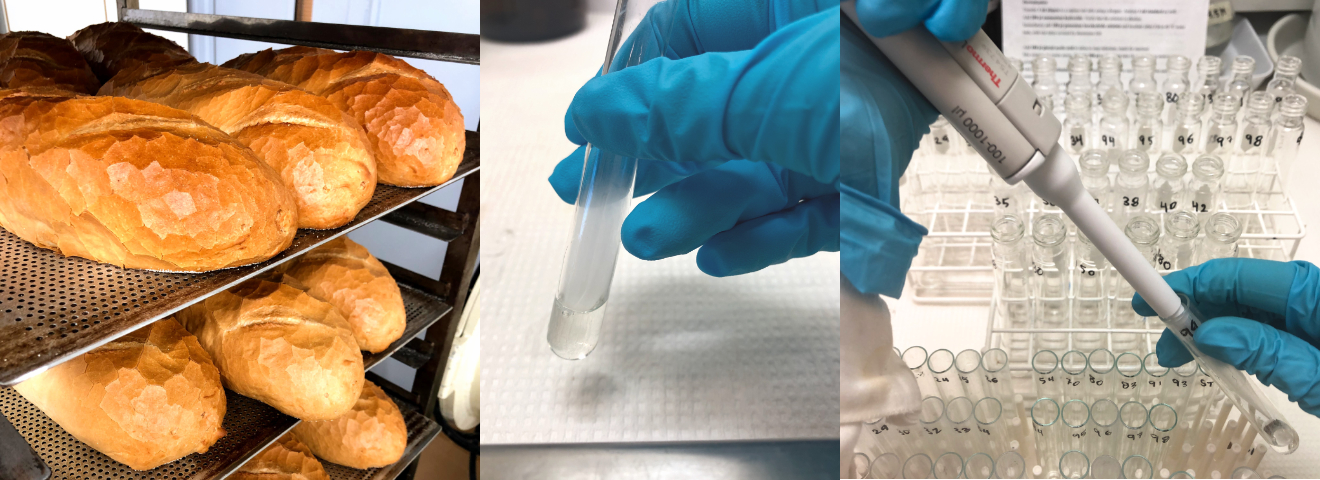
Novel potato starch – New structure descriptors may reveal properties for new applications (Xue Zhao's PhD project)
Starch consists of the two polymers, amylose and amylopectin. The properties of starch are influenced both by the ratio of these two molecules and by the structure of amylopectin. The aim of the project is to gain detailed knowledge of amylopectin structure to understand the biosynthesis of starch as well as the relationship between structure and properties. In the prolonged view, the final goal is to genetically customize starch with specific properties. The project is funded by SLU and TC4F
Contact information: Xue Zhao https://www.slu.se/en/cv/xue-zhao/
New starch for novel applications (Shishant Jayarathna's PhD project)
Starch is well known for its unique properties for both food and non-food applications and, the range of starch applications can be further expanded. Within the project, different types of novel potato and barley starches generated through various plant breeding techniques will be characterized for their physical and chemical properties. The aim is to understand the influences of manipulations to the starch biosynthesis pathway to the resulting starch properties. The generated knowledge is expected to be utilized by plant breeders to develop tailor-made starches already inside the plants, eliminating or reducing the need for post-harvest modifications of starch for various applications. We perceive that the project will generate the knowledge platform regarding energy-efficient, eco-friendly, and sustainable approaches to in-planta modify the starch for particular applications. The project is funded by SLU and TC4F
Contact information: Shishanthi Jayarathna https://www.slu.se/en/ew-cv/shishanthi-jayarathna-/
Complementary porridge with high nutritional quality for children in Mozambique (Sunera Zulficar Nurmomade's PhD project)
Complementary porridge with high nutritional quality for children in Mozambique
This project is an attempt to formulate complementary porridge with high nutritional quality based on pearl millet and cow pea for children under 5 years in Mozambique. Porridge is the staple food consumed widely in Mozambique and Africa made from millets and legumes. Unfortunately, pearl millet and cow pea legume also contain several anti-nutritional compounds (ANC) which inhibit the starch hydrolysis and mineral bioavailability thus impairing the growth among the children. This is a project where we will be focusing to use traditional low-cost processing techniques like traditional fermentation and germination of the millet and legume flours for tackling ANCs and achieving better nutritional profile. Flour with better functional properties will be helpful in improving the nutritional profile of the cooked porridge and can be used as a weaning food for dealing with malnutrition problems among children. The project is funded by Swedish International Development Corporation Agency, Sida.
Contact Information: Sunera Zulficar Nurmomade
Sustainable organic food from heritage cereal – using history to form the future
Introducing historical heritage cereals on a larger scale may have a potential to contribute to several of the UN sustainable development goals and increase profitability of organic farming. This project will examine whether heritage cereals are more resilient to environmental variation and management than modern cereals. Further, links between consumer preferences and nutritional quality of heritage cereals will be studied. This is an interdisciplinary project involving scientists at the Swedish Biodiversity Centre, SLU, the departments of Molecular sciences, Ecology and Crop production ecology, SLU, as well as the Faculty of natural sciences, Kristianstad University. Our group is mainly responsible for chemical characterization of the grains and food items produced in the project. This include for example carbohydrates and phenolic compounds. More information is available on the the project website at Swedish Biodiversity Centre (SLU).
Contact information: Roger Andersson (link to CV)
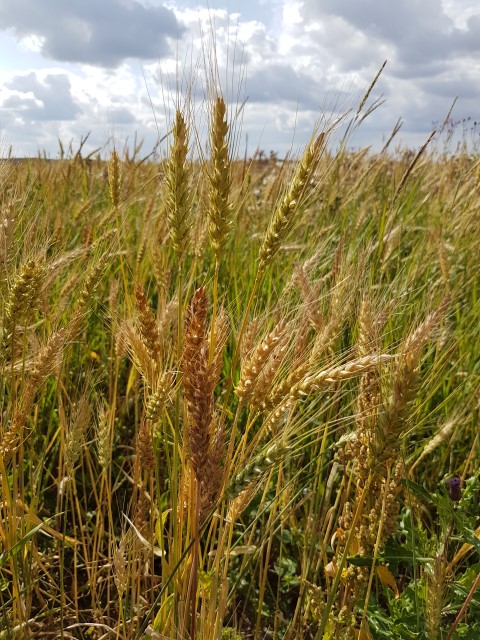
Field cress (Lepidium campestre) – a novel oil crop for biofuel and animal feed in northern Sweden
Investigating the genetic background for increased oil content and reduced antinutritional factors in field cress (Lepidium campestre)
Meeting the growing demand for vegetable oils for industrial applications require the development of more efficient oilseed crops. Field cress (Lepidium campestre) has been targeted for domestication because it holds high agronomic promise as a biennial/perennial oilseed crop as it has many good characteristics of a high-yielding winter-hardy crop. Unlike any other oilseed crop, field cress can be highly productive in the northern parts of temperate regions. In addition, field cress provides important ecosystem-services as it functions as a cover crop during winter and can be undersown a spring cereal. The domestication of field cress is a unique project and the possibility for commercialization is approaching.
Two of the key traits for field cress commercialization is oil content and anti-nutritional factors such as glucosinolates, which are the focus of this project. The average oil content of field cress is 15-20 %, which needs to be increased to make the crop highly productive. Reducing the concentration of glucosinolates in field cress will also allow the seed meal to be used as a high-value animal feed, which will also be addressed in this project. The project is funded by Formas, and managed by the Department of Plant Breeding, SLU.
Contact information: Annica Andersson (link to CV)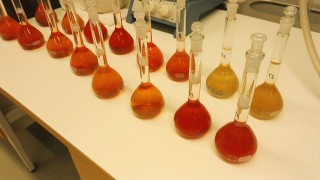
Structural features of β-glucan favoring its higher bioactivity and nutritional value
β-Glucan is a bioactive component of dietary fibre which possesses a number of positive effects on human health. Recent studies demonstrate that a higher molecular weight of β-glucan is more advantageous for the production of healthy food. Unfortunately, β-glucan molecular weight decreases at many routine processes of food production, e.g. bread baking. In collaboration with plant breeders we identified a unique barley variety containing a more stable β-glucan. Our present aim is to unravel structural features of this β-glucan and apply this knowledge for guided breeding of barley varieties with enhanced nutritional properties.
Contact information: Roger Andersson (link to CV)
Selected publications
List of publications
Zhao, X., Jayarathna, J., Turesson, H., Fält, A.-S., Nestor, G., González, M. N., Olsson, N., Beganovic, M., Hofvander, P., Andersson, R. & Andersson, M. Amylose starch with no detectable branching developed through DNA-free CRISPR-Cas9 mediated mutagenesis of two starch branching enzymes in potato. Scientific Reports 11 (2021) 4311
Shewry, P.R., Hassall, K.L., Grausgruber, H., Andersson, A.A.M., Lampi. A.-M., Piironen, V., Rakszegi, M., Ward. J.L. and Lovegrove A. Do modern types of wheat have lower quality for human health? Nutrition Bulletin 45 (2020) 362-373
George, N., Andersson, A.A.M., Andersson, R. and Kamal-Eldin, A. Lignin is the main determinant of total dietary fiber differences between date fruit (Phoenix dactylifera L.) varieties. NFS J. 21 (2020) 16-21
Berndtsson, E., Andersson, R., Johansson, E. and Olsson, M. E. Side streams of broccoli leaves: A climate smart and healthy food ingredient. Int. J. Environ. Res. Public Health 17 (2020) 2406
Dotsenko, G., Andersson, A. A. M. and Andersson, R. Material disintegration affects enzymatic determination of β-glucan in barley and oats. J. Cereal Sci. 88 (2019) 138-144
Arefaine, H., Rydhmer, L., Andersson, R. and Ivarsson, E. Lepidium cake as a feedstuff for pigs. Livestock Science 225 (2019) 47-52
De Arcangelis, E., Djurle, S., Andersson, A. A. M., Marconi, M., Messia, M. C. and Andersson, R. Structure analysis of β-glucan in barley and effects of wheat β-glucanase. J. Cereal Sci. 79 (2018) 449-455
Jonsson, K., Andersson, R., Bach Knudsen, K. E., Hallmans, G., Hanhineva, K., Katina, K., Kolehmainen, M., Kyrø, C., Langton, M., Nordlund, E., Nygaard Lærke, H., Olsen, A., Poutanen, K., Tjønneland, A. and Landberg, R. Rye and health - Where do we stand and where do we go? Trends in Food Science & Technology 79 (2018) 78–87
Zhao, X., Andersson, M. and Andersson, R. Resistant starch and other dietary fiber components in tubers from a high-amylose potato. Food Chem. 251 (2018) 58-63
Jin, Y., Fei, M., Rosenquist, S., Jin, L., Gohil, S., Sandström, C., Olsson, H., Persson, C., Höglund, A.-S., Fransson, G., Ruan, Y., Åman, P., Jansson, C., Liu, C., Andersson, R., Sun, C. A dual-promoter gene orchestrates the sucrose-coordinated synthesis of starch and fructan. Mol. Plant. 10 (2017) 1556–1570
Andersson, A. A. M., Andersson, R., Jonsäll, A., Andersson, J. Fredriksson, H. Effect of different extrusion parameters on dietary fibre in wheat bran and rye bran. Journal of Food Science 82 (2017) 1344-1350
Källman, A., Vamadevan, V., Bertoft, E., Koch, K., Seetharamana, K., Åman, P. and Andersson, R. Thermal properties of barley starch and its relation to starch characteristics. Int. J. Biol. Macromol. 81 (2015) 692-700
Rieder, A., Knutsen, S. H., Ulset, A.-S. T., Christensen, B. E., Andersson, R., Mikkelson, A., Tuomainen, P., Maina, N. and Ballance, S. Inter-laboratory evaluation of SEC-post-column calcofluor for determination of the weight-average molar mass of cereal β-glucan. Carbohydr. Polym. 124 (2015) 254-264
Andersson, A. A. M., Dimberg, L., Åman, P. and Landberg, R. Recent findings on certain bioactive components in whole grain wheat and rye. Journal of Cereal Science, 59 (2014) 294-311.
Bobadilla, F., Rodriguez-Tirado, C., Imarai, M., Galotto, M. J. and Andersson, R. Soluble β-1,3/1,6-glucan in seaweed from the southern hemisphere and its immunomodulatory effect. Carbohydr. Polym. 92 (2013) 241-248
Bertoft, E., Källman, A., Koch, K., Andersson, R. and Åman, P. The building block structure of barley amylopectin. Int. J. Biol. Macromol. 49 (2011) 900-909
Shewry, P.R., Piironen, V., Lampi, A.-M., Edelman, M., Kariluoto, S., Nurmi, T., Nyström, L., Ravel, C., Charmet, C., Andersson, A.A.M., Åman P., Boros, D., Gebruers, K., Dornez, E., Courtin, C., Delcour, C., Rakszegi, M., Bedo, Z. and Ward, J.L. The HEALTHGRAIN wheat diversity screen: Effects of genotype and environment on phytochemicals and dietary fiber components. Journal of Agricultural and Food Chemistry 58 (2010) 9291-9298
Andersson, R., Fransson, G., Tietjen, M. and Åman, P. Content and molecular-weight distribution of dietary fiber components in whole-grain rye flour and bread. J. Agric. Food Chem. 57 (2009) 2004–2008
Ajithkumar, A., Andersson, R., Siika-aho, M., Tenkanen, M. and Åman, P. Isolation of cellotriosyl blocks from barley β-glucan with endo-1,4-β-glucanase from Trichoderma reesei. Carbohydr. Polym. 64 (2006) 233-238
Andersson, A. A. M., Armö, E., Grangeon, E., Fredriksson, H., Andersson, R. and Åman, P. Molecular weight and structure units of (1→3, 1→4)-β-glucan in dough and bread made from hull-less barley milling fractions. J. Cereal. Sci. 40 (2004) 195-204
Andersson, A.A.M., Merker, A., Nilsson, P., Sørensen, H. and Åman, P. Chemical composition of the potential new oil crops Barbarea vulgaris, Barbarea verna and Lepidium campestre. J. Sci. Food Agric. 79 (1999) 179-186
Theander, O., Åman, P., Westerlund, E., Andersson, R. and Pettersson, D. Total dietary fiber determined as neutral sugar and uronic acid residues, and lignin (The Uppsala method): Collaborative study. J. Assoc. Off. Anal. Chem. 78 (1995) 1030-1044

